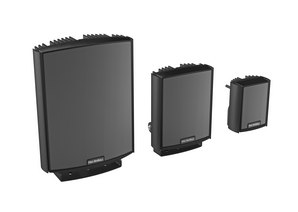Do you have a perimeter security application? Is your lighting affecting the efficiency of your cameras? Fiber SenSys has the solution for you! Intelligent Lighting Solutions such as IR and White Light are available in 14 Watt, 40 Watt, and 80 Watt sizes. Take the step to making your cameras more efficient and continue reading about these solutions below.
Included in the design of a fully-integrated perimeter security solution, the industry has adopted an abundant use of cameras. Modern camera solutions are IP-enabled to provide network connectivity and control of camera equipment. To complement the use of cameras, Fiber SenSys offers a full line of intelligent lighting solutions, designed to increase the efficiency of the cameras. It has been said that, "Better lighting makes cameras more effective." We offer IR and White Light alternatives in 14 Watt, 40 Watt and 80 Watt. The FSI lighting solution includes: 
• Built-in photocell for automatic on/off operation
• Power adjust
• Photocell level adjust
• Photocell following contact
• Telemetry input for remote on/off operation
Light is fundamental to camera solutions. Without light no images are possible as it is light reflected from the world around you that makes the world visible both to the human eye and to the camera. The performance of any camera system depends not only on the essential components of camera and lens, but also relies totally on the quantity, quality, and distribution of available light. Light determines whether a subject can be viewed at all, at what distances, and the quality and direction of the light controls the appearance of the subject.
Wavelengths of light visible to the human eye are interpreted by the brain as colors from 400nm (violet) to 700nm (red). Between these polar wavelengths are the other colors - indigo, blue, cyan, green, yellow and orange. When visible White-Light is split into its component parts by a prism, or in a rainbow, these are the colors visible. When these wavelengths (from 400nm to 700nm) are seen together they appear as White-Light. Before the 17th century it was believed that color existed in objects, irrespective of the light by which they were seen. A green leaf looks green because it reflects green wavelengths present in White-Light. You can see this yourself by examining a green object under a red light: As the lighting contains no green, the object will appear black. To take a more familiar example, when you buy a colored item of clothing you often take this to the door or window to check how it looks in daylight. This is because you know that incandescent interior lighting, although white, contains a slightly different mixture of wavelengths from the light outside, and consequently alters the apparent color of the garment.
The exact same can be said in CCTV terms. The color output of an illuminator effects the color seen by the camera and on the CCTV monitor. For example, low pressure sodium street lighting produces a yellowish light, distorting color images on CCTV systems. Achieving accurate color CCTV images is a challenge and a skill. To provide true color CCTV images, White-Light illuminators should provide color corrected illumination matched to the visible spectrum.


.png?width=58&height=58&name=X_logo_2023_(white).png)
